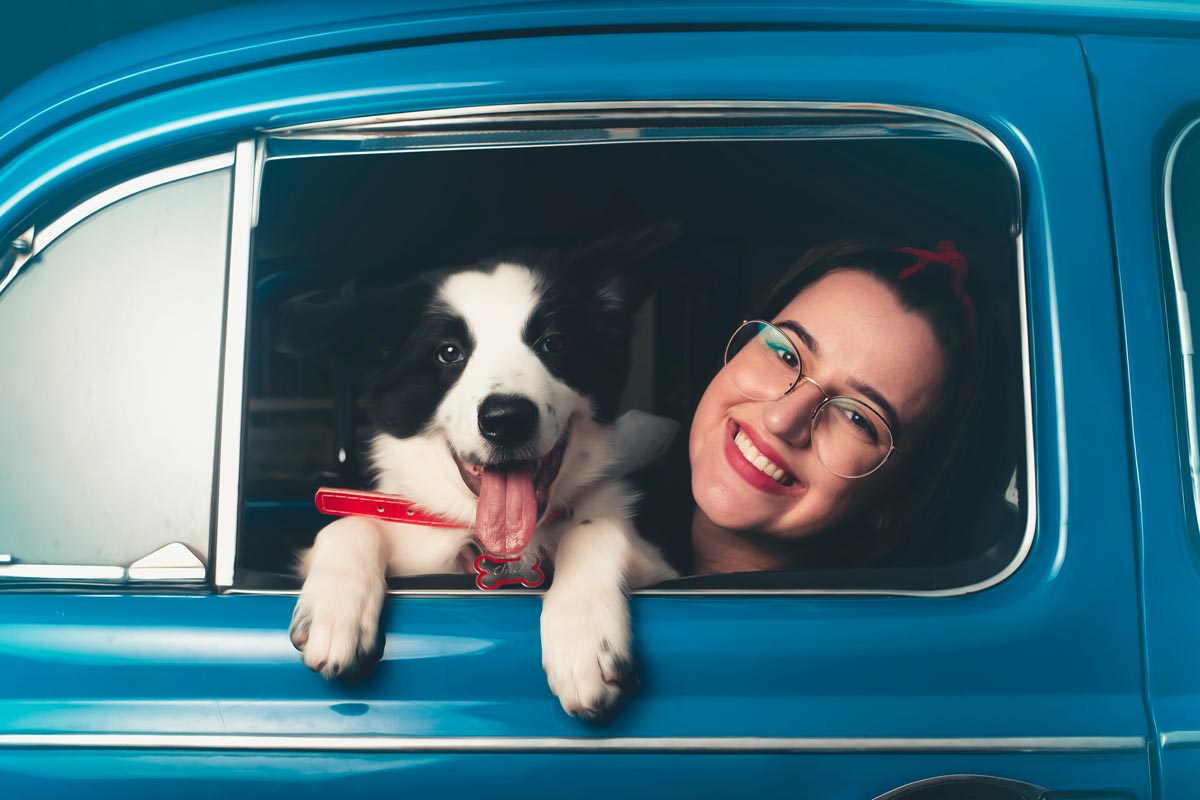How to Move with Your Pet
If you have a beloved pet, the ASPCA suggests that you make sure your pet loves it before you choose a new home! That’s a consideration, but it is one that pet owners have responded to over the last few years. Remember, movers do not move pets. Too much can happen, but they want you to successfully move with your dog, cat, or other pet friend.
Pets bring joy and comfort and are fun, but they can become challenging during a move (long or short). Younger pets may welcome the adventure, while older pets have more difficulty adjusting. Their eyesight is limited, along with their hearing. Without the proper adjustment, many pets can feel scared and even depressed. Their world is changing! Boxes are stacked everywhere, and what was once familiar is gone!
Pets are a Life-Long Commitment
One lady relocating across town related the problems she began to have with her older dog: “I didn’t think about the effect moving would have on her until after packing boxes all day, I noticed my dog was nowhere to be found. She was in another room looking for something that reminded her she was still “home.”
Sad note: One of the most common reasons people give up a pet is because they are moving and decide they cannot take the animal. Many say moving with a cat or dog is too much of a hassle. Others believe their pet will find the move too traumatic and, therefore, are best left behind. People, especially those who are renting, can become discouraged because they need to find a pet-friendly rental.
Although moving can be an adjustment for pets, what they really want most is to be with you, wherever you are. When we take in a puppy, dog, or cat, we make a commitment to care for that animal for the rest of its life.
Here are some suggestions that should help you make a good transition to your new home.
Pick a home in a city that is dog-friendly. This one is for the “dogs,” but if you are a person who enjoys walking your dog and even enjoys eating out with your pooch, you want to make sure you are welcomed! Communities that are growing realize that more and more people like access to parks where dogs can walk. There are “pet stations” that offer “poop” bags and water fountains for your pup. Dog parks are good but knowing that your well-behaved dog can go with you is even better. Many restaurants offer outside seating for well-behaved dogs on a leash. Research works in this area.
For Renters Only: Read your Rental Agreement: Don’t try to “slip” a dog or a cat into the equation when the landlord has said, “No Pets.” Stick with it and look for the right relocation. Something always works out, and while moving with a pet can be difficult, it is even more stressful to leave the pet behind unless you have made proper arrangements for someone to care for your animal.
Packing Up Your Home: While cats love to play in cardboard boxes, they are not fans of huge changes. Be prepared for them to “walk” the entire first night you are in your new home.
Prepare your pets for the Move by Acclimation: One of the best ways to help them “ease” into a move is to take them to their new home to get used to the new location. If this is not possible, make sure you have a “bag” packed for your pet containing familiar things—a small blanket with the scent of the old home on it, toys, and things like this can help your pet adjust. Of course, this applies mainly to dogs and cats. For birds, you will probably want to keep that pet near you and on a familiar schedule with cage coverings that follow a specific daily pattern.
Pet Proof Your New Home: Before your movers arrive and begin to unload the truck, look for anything that could harm your pup, kitty, or, for that matter, your child. You want to ensure no ropes, twine or string, cleaning supplies, rodent killer, or anything that could be consumed quickly. Dogs, especially, like to explore with their noses, but they also “taste” to see if what they have found is good. Don’t forget to remove any poisonous houseplants and confirm that no pest-control poison traps have been left anywhere in the house.
Keep the Stress Level Low: Look for ways to keep stress at a very low level by cleaning before your move. Have a box packed with breakfast, lunch, or dinner ingredients. Put beds together first so you will have a place to land when the truck is unloaded and it is time to “crash.” Follow other suggestions on this website about what to pack and unpack first. Being organized saves time and keeps you from feeling overwhelmed after your moving team leaves and the door to your new home closes. The lack of stress helps your best friend feel more confident and safer, which leads to less doggy destruction!
Day of the Move: Let your dog or kitty have a spa day or a day at doggy daycare. A move on any level can be stressful for us, and for an animal, it can be confusing and hard to understand. It’s best to let your four-legged friend have time at the sitters! Some animal behaviorists suggest letting your pet have a two-to-three-day vacation. This gives you time to master your new location and secure the doorways. In other words, dogs and cats stay inside instead of making a “break for it” the moment a door is left open.
If a day at doggy daycare is not an option, create a familiar and safe place for your pet. We suggest the use of a kennel for your pet’s safety and the safety of those with you. Once your pet arrives at their new home, set up a safe place for them. This would be an area with less traffic, all their familiar things, and food bowls.
Calming Medications: A goal for any professional mover is to have the move go well, and the experience is exciting for the new owners. But some pets have a hard time with change. They bark, are nervous, and can’t settle. If the stress seems too great for your pet, ask your veterinarian about calming medications. Some natural things can help; if those do not work, then some meds will take the edge off an anxious pet.
Introduce Your Pet to its New Home: Once the movers are gone, and the truck has pulled away. Then, you can let your four-legged friend out of the kennel to walk around the new house.
Keep doors closed. Cats are escape masters, and dogs are right behind them! An open door is an invitation to explore, which can end with a lost pet or something else.
Know if You Need a New Veterinarian. Even before your move takes place, get copies of your pet’s records and have those on hand should you need to connect with a new local vet. Moving a long distance means you must get in touch with a new vet. Even a move across town could result in this. Time and distance can mean new doctors for people and a new doctor for your pet.
Pets are a responsibility because they cannot take care of themselves. Most pet owners find that things go more smoothly when they put their pet at the top of their priority list for a move. Think of your pet and what is best for him or her, and your move will be much more enjoyable!
Do you have any questions regarding your move, we’re here to help!
Are you in the market for a mover in Alabama? Lambert Moving Systems is one of the top companies for moving in Alabama. We’ve been around for 90 years. Find your location below to get in touch now!
Photo by Breno Cardoso on Pexels








